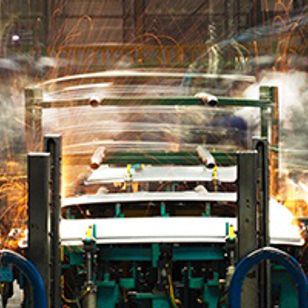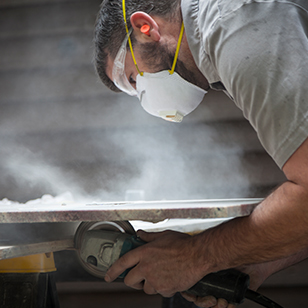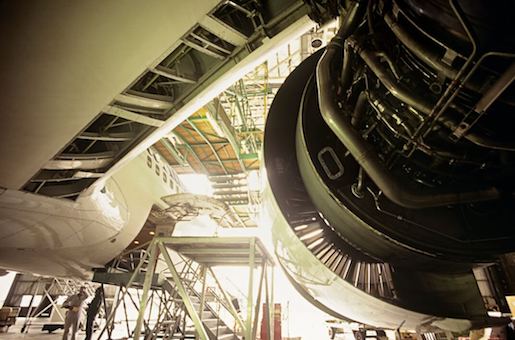Improve Predictive Maintenance Profitability with Modular Industrial Air Filtration
Save Maintenance Time and Money with Modular Industrial Air Filtration
According to the Department of Energy, predictive maintenance can reduce overall industrial maintenance costs by up to 30%, cut downtime by up to 45%, and decrease breakdowns by more than 70%. If you’re a shop floor manager, you already know that proactive maintenance is key to preventing unplanned equipment outages, reducing labor costs for repairs, and ensuring a well-oiled, efficient production machine.
But excessive maintenance or cleaning (such as HVAC filter changes) can release free-floating contaminants that can settle into every crack and crevice of valuable machinery and corrode finishes and paints – threatening quality and reducing maintenance ROI.
Maintenance tasks that produce airborne hazards include:
- Boiler work: Moving boiler piping often requires welding in areas not designated to control toxic oil mist and weld smoke
- Facility painting: Even airless spray gun applications can result in overspray and odors/fumes that inhibit productivity
- HVAC filter changes: Filter changes dislodge dust, which can short out equipment motors, fuses, and other computer-controlled systems
How much time and money would be saved if manufacturers and fabricators could reduce airborne contaminants during these processes?
Modular industrial air filtration can “move” with predictive maintenance tasks to reduce airborne contaminants that drain operational ROI. What’s more, these industrial clean air solutions can control indoor air particulates during daily workflows involving messy cutting, sanding, and coating processes – reducing the need for excessive maintenance.
Here are just a few examples of how modular industrial air filtration improves predictive maintenance ROI and reduces unnecessary cleanup.
Alternative Energy: Increase Maintenance ROI
Controlling air contaminants during predictive maintenance on behemoth turbine blades is time-consuming and expensive. Wind blade sanding requires extensive regular cleanup to prevent particulates from overloading and killing HVAC motors. Each post-sanding cleanup can take up to two days to complete before the next sanding process can begin.
Modular clean air solutions can address these maintenance inefficiencies by:
- Using dust containment and air filtration technologies to capture particulates during sanding
- Combining the above technologies with a retractable enclosure to “move” with the sanding process and eliminate excess sanding particulates
- Eliminating excessive downtime normally required to clean the facility after each sanding process
Stone Cutting: Eliminate Dust Cleanup
Manufacturers and contractors who work with stone and tile deal with messy dust on a daily basis. Often these dust particulates contain silica, which are not only hazardous if inhaled, but can wreak expensive havoc on the shop floor by limiting visibility and clogging valuable machinery.
Simply loading empty bags into a hopper after stone cutting can release massive clouds of dust that cause excessive equipment maintenance and cleanup.
A modular clean air solution can eliminate these bottom-line issues with:
- Isolated enclosures that include multi-stage air filtration to eliminate dust that inhibits visibility and productivity
- Negative pressure clean rooms to pull particulates into filters and away from employees and processes, eliminating excessive dust cleanup
- Ambient dust collection systems that capture tile dust in bags that can be used in future tile production
Aerospace & Aviation: Reduce Downtime
Aerospace and aviation manufacturers often have to resurface epoxy floors in their hangers as part of their regular predictive maintenance. Unfortunately, this usually entails shutting down engine building and aircraft component repairs while the floors are being sanded and blasted. This time-consuming process can cost thousands of dollars in lost man-hours and productivity.
A modular industrial air filtration solution can significantly reduce these maintenance expenses with:
- A negative-pressure HEPA filtration system that captures and contains harmful epoxy dust
- Modular clean rooms that move with sanding and blasting, so aircraft manufacturing can continue in the same hanger during floor resurfacing
- Hexavalent chromium containment during sanding, coating, and painting operations
Transportation: Create Maintenance Efficiency
Transportation manufacturers often rely on potentially toxic paints to prevent metal components from corroding when exposed to outdoor conditions. OSHA regulates exposure to paint hazards, but these paint applications are critical to regular maintenance, especially for rail car manufacturers. Without an effective industrial air filtration system, rail car manufacturers risk regulatory fines or even a forced shutdown.
Modular clean air solutions provide a safe painting environment via:
- Ambient air cleaning systems that isolate and contain paint fumes and particulates
- Spray and paint booths with non-vented filtration to recycle air without the need to exhaust contaminants to the outside environment
- Portable clean rooms that can retract to less than 20 percent of their length
Improve Predictive Maintenance ROI with Cost-Effective Clean Air
Manufacturing, fabrication, and repair facilities need to be adaptable and quick to ensure continuous productivity and ROI. While predictive maintenance is critical to preventing equipment failure and unplanned downtime, excessive maintenance can slow down critical production processes.
Modular industrial air filtration can integrate with existing workflows to alleviate these maintenance challenges. Duroair’s clean air solutions capture and contain grinding, sanding, and painting dust and fumes that can undo the work accomplished with predictive maintenance.
With less airborne contamination, equipment stays cleaner longer and planned maintenance schedules can be scaled back, reducing maintenance workload and leaving more hours for actual production.
Combining retractable enclosures with vented and non-vented filtration, Duroair engineers custom clean air solutions that work with both existing floor spaces and cellular processes to reduce predictive maintenance overhead. Our flexible, cost-effective contamination control can be deployed when and where you need it.
To learn how we can engineer a clean air solution to help you improve your predictive maintenance ROI, contact us today.


